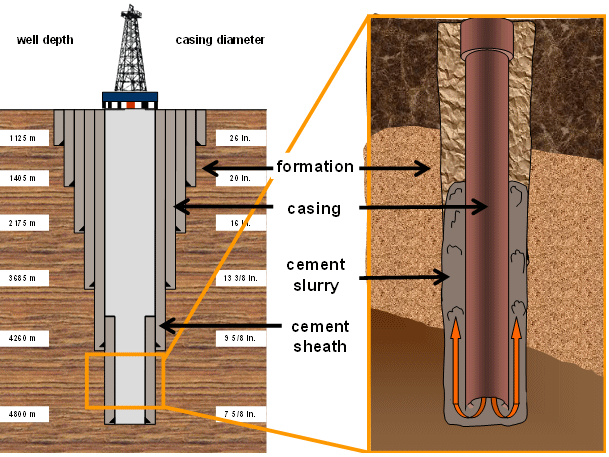Cementing is another stage in well completion that prepares a wellbore for further stages. The operation mainly involves development and pumping of cement into place to protect and seal the wellbore. This way, non-hydrocarbons, especially water, can be prevented from penetrating into the well.
Cementing is used for other purposes, to seal the annulus after a casing string has been run into a well, to seal an area where flow has been reduced or absent (also known as lost circulation zones), to plug an existing well to control its flow, and to plug an abandoned wellbore.
To displace existing drilling fluids and to fill in the space between the casing and the sides of the drilled well, cement slurry is pumped into the well. The slurry is composed of a special mixture of additives and cement, and is left to harden to seal the well from non-hydrocarbons that might try to enter the wellstream. This is also to ensure that the casing is positioned permanently into place.
Cement Preparation
To determine the amount of cement needed, the diameter and the depth of the borehole are measured using a caliper log. Multifinger caliper logs measure the diameter at various locations using mechanical and sonic means to accommodate irregularities and to determine the volume of the openhole.
The required physical properties and proper set of cement are also put into consideration before starting the cementing and pumping operations. Special mixers are used to combine dry cement with water like hydraulic jet mixers, batch mixers, or re-circulating mixers. The result is wet cement known as slurry. Portland cement is used in this process and is calibrated with additives to form one of the eight different classes of cement which is set by the American Petroleum Institute (API)
There are various types additives mixed into the slurry: accelerators can shorten the setting time for the cement, while retarders can prolong its setting time. On the other hand, lightweight and heavyweight additives can decrease or increase the density of the slurry. Other additives can transform the compressive strength of cement, its flow properties, and its dehydration rates. Bridging materials are added to plug lost circulation zones and antifoam additives are included to prevent foaming within the well. Cost reduction efforts call for the use of extenders.
“How Does Cementing Work?” Rigzone. Dice Holdingd, Inc., 1999. Web. 19 Dec. 2014. <https://www.rigzone.com/training/insight.asp?insight_id=317&c_id=1>.


